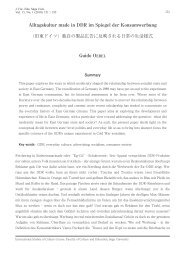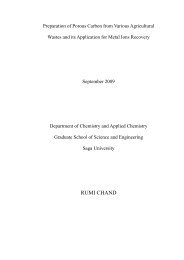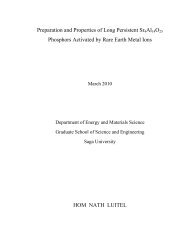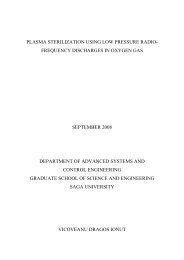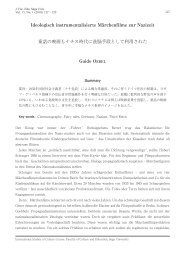High Order Harmonic Oscillators in Microwave and Millimeter-wave ...
High Order Harmonic Oscillators in Microwave and Millimeter-wave ...
High Order Harmonic Oscillators in Microwave and Millimeter-wave ...
- No tags were found...
Create successful ePaper yourself
Turn your PDF publications into a flip-book with our unique Google optimized e-Paper software.
2 <strong>Oscillators</strong><br />
Sθ(ω)<br />
k<br />
∆ f<br />
kT0F<br />
P0<br />
f0<br />
fα<br />
f<br />
Fig. 2.9: Idealized power spectral density of amplifier noise <strong>in</strong>clud<strong>in</strong>g 1/f <strong>and</strong> thermal<br />
components.<br />
Us<strong>in</strong>g (2.38) <strong>in</strong> (2.37) gives the power spectral density of the output phase noise as<br />
S φ (ω) = kT 0F<br />
P 0<br />
= kT 0F<br />
P 0<br />
( Kω<br />
2<br />
0 ω α<br />
4Q 2 ∆ω + ω0<br />
2<br />
3 4Q 2 ∆ω + Kω )<br />
α<br />
2 ∆ω + 1<br />
( Kωα ωh<br />
2<br />
∆ω 3<br />
+ ω2 h<br />
∆ω 2 + Kω α<br />
∆ω + 1 )<br />
. (2.39)<br />
This result is sketched <strong>in</strong> Fig. 2.10. There are two cases, depend<strong>in</strong>g on which of the<br />
middle two terms of (2.39) is more significant. In either case, for frequencies close to the<br />
carrier at f 0 , the noise power decreases as 1/f 3 , or -18 dB/octave. If the resonator has<br />
a relatively low Q, so that its 3 dB b<strong>and</strong>width f h > f α , then for frequencies between f α<br />
<strong>and</strong> f h the noise power drops as 1/f 2 , or -12 dB/octave. If the resonator has a relatively<br />
high Q, so that f h < f α , then for frequencies between f h <strong>and</strong> f α the noise power drops as<br />
1/f, or -6 dB/octave.<br />
At higher frequencies the noise is predom<strong>in</strong>antly thermal, constant with frequency, <strong>and</strong><br />
proportional to the noise figure of the amplifier. A noiseless amplifier with F = 1 (0<br />
dB) would produce a m<strong>in</strong>imum noise floor of kT 0 = −174 dBm/Hz. In accordance with<br />
Figure 2.6, the noise power is greatest frequencies closest to the carrier frequency, but<br />
(2.39) shows that the 1/f 3 component is proportional to 1/Q 2 , so that better phase noise<br />
characteristics close to the carrier are achieved with a high-Q resonator. F<strong>in</strong>ally, recall<br />
23



